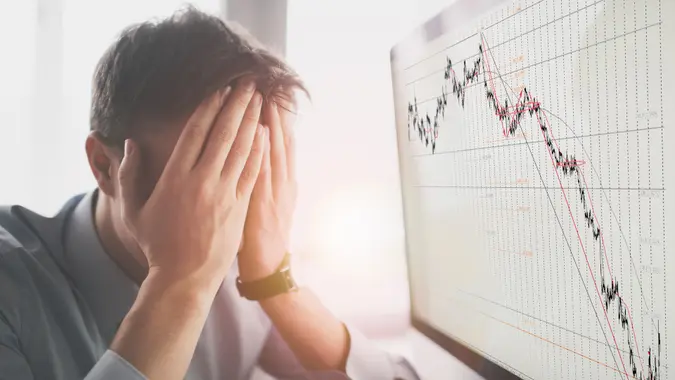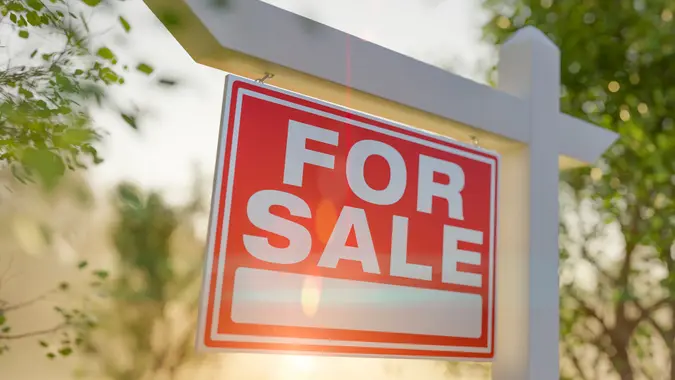The Strangest Things People Have Invested In — That Actually Made Them Rich

Commitment to Our Readers
GOBankingRates' editorial team is committed to bringing you unbiased reviews and information. We use data-driven methodologies to evaluate financial products and services - our reviews and ratings are not influenced by advertisers. You can read more about our editorial guidelines and our products and services review methodology.

20 Years
Helping You Live Richer

Reviewed
by Experts

Trusted by
Millions of Readers
There are a lot of ways to make a buck in this world. Some of them are smarter than others. Some are cooler than others. And some, well, they’re stranger than others.
Sure, there’s the rogue scientist working on a patent for a serum that will help you attain superhuman smarts, or the businessperson wondering if they could build a real-life Jurassic Park (spoiler alert: just because you can build something doesn’t mean you should).
Then there are the investors with a bit of creativity and verve — people willing to explore some, shall we say, unique ways of making big bucks. While not your average 401(k) strategy, these oddball ideas have paid off big. GOBankingRates explored some of the kookier — yet highly lucrative — things people have successfully invested in.
1. Pizza.com
Who doesn’t love pizza? Everyone loves pizza. Maryland resident Chris Clark banked on that fact — quite literally — when he registered the Pizza.com domain in 1994. Clark initially secured the domain to help promote his consulting firm. After selling the firm in 2000, he kept Pizza.com until 2008.
Once he saw the success of other domain names, like Vodka.com, which sold for $3 million, Clark decided to try his luck. He eventually auctioned Pizza.com for $2.6 million. You can buy a lot of pepperoni with that.
2. The ShoeZeum
There’s a lot of beauty to take in at a museum: classic art and artifacts, stunning jewelry, and — Air Jordans? That’s right. The ShoeZeum is a real place. Built by sneaker collector and entrepreneur Jordan Geller, it showcased a massive collection of rare Air Jordans and Nike shoes. His operation became so prolific that in 2009, Nike actually banned him from its stores.
But Geller got the last laugh. He sold his inventory and used the profits to create the ShoeZeum, the world’s first shoe museum, in 2010. One of his first guests was the then-CEO of eBay, Meg Whitman. Nike executives later came around, too, enamored enough to pay rent on the museum and recruit Geller to speak to talent scouts.
Since then, Geller has taken his show — and his shoes — on the road, working with companies like Zappos.com and serving as a sneaker consultant at Sotheby’s. In 2020, he broke his own record for the most expensive shoes ever sold at auction, offloading a pair of game-worn Air Jordan 1s for $560,000.
3. Beanie Babies
Anyone who came of age in the 1990s and early 2000s remembers Beanie Babies. They were adorable — and they were everywhere. Although most eventually lost their value, a handful of rare models still fetched serious money. Unfortunately, that incentivized fraudsters to create counterfeit beanies and tags.
Enter Peggy Gallagher, a special education teacher with a knack for spotting the real deal. Her ability to identify and authenticate genuine, rare Beanie Babies helped her sell some for six figures — but she didn’t stop there. Gallagher built a successful business around helping other collectors authenticate their own Beanie Babies, turning a childhood craze into a long-term income stream.
4. Air (No, Really)
If there’s one thing you can bank on, it’s that people will pay a pretty penny for anything that promises to make them look younger, feel better, or live longer. Entrepreneur Leo De Watts understood this when he launched Aethaer, a company that sells bottled air from the British countryside.
Yes, bottled air. Teams roam rural areas, glass jars in hand, collecting what they claim is the cleanest, freshest air available.
“What in the GOOP is this?” you might be asking. Well, it’s lucrative enough that De Watts is selling bottles for thousands of dollars a pop.
5. Haunted Artifacts
If you’ve ever flipped through cable channels late at night, you’ve likely encountered ghost hunter Zak Bagans, who has made a living off the paranormal. He went from hosting “Ghost Adventures” to curating Zak Bagans’ The Haunted Museum in Las Vegas — a collection of spooky artifacts and controversial memorabilia.
The museum features a number of spooky artifacts, such as the Dybbuk Box, aka “the world’s most haunted object” and Dr. Kevorkian’s “death van.” While it might not be your idea of a traditional investment, the museum draws a steady stream of visitors.
In addition to ticket sales and merchandise, Bagans generates revenue through a spin-off TV show and media appearances, proving that even the paranormal can pay off.
More From GOBankingRates
 Written by
Written by  Edited by
Edited by 

























